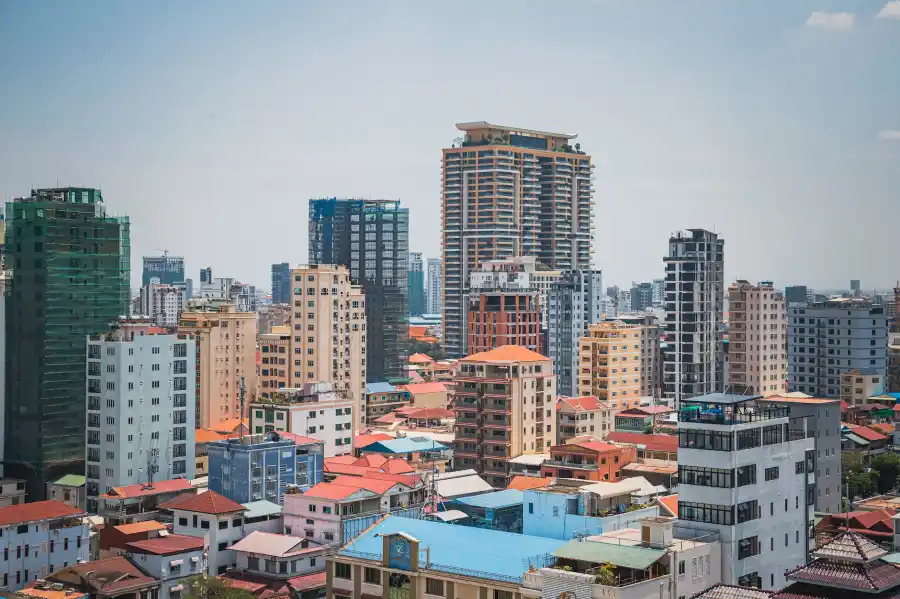Since first posing the analogy of a school as an ecosystem over a decade ago, my goal on this blog has been to try to find a way to leverage the metaphor to improve teacher practice and student learning. Yet I have struggled to find a practical application stemming from the analogy, some sort of praxis in which insights gleaned from ecology, organizational theory, quantum physics, and other disciplines could be brought to bear in schools and classrooms.
Ultimately, I haven’t been able to gain much traction on many tangible implications beyond highlighting the impact of physical environment and infrastructure as contexts for learning, which is essentially where I have left off with this blog, moving over thence to Language & Literacy.
That said, I remain fascinated by complexity theory and interdisciplinary noodling. After listening recently to a podcast interview on Simplifying Complexity with Geoffrey West, I added his book, Scale, to my to-read list. I found it to be an interesting book that bears some relevance to my desire to bring something more tangible to examining schools as complex adaptive systems.
What is compelling about Scale is that West brings empiricism derived from physics to the study of complex adaptive systems – and he lays out a case that power law scaling can be demonstrated across widely disparate systems, from animals to cities.
Power Law Scaling
Power law scaling refers to a mathematical relationship where a relative change in one quantity results in a proportional relative change in another quantity.
Some key quotes from the book on power law scaling:
- “These systematic scaling relationships are highly counterintuitive. They show that almost all the physiological characteristics and life-history events of any organism are primarily determined simply by its size”
- “power law scaling is the mathematical expression of self-similarity and fractality.”
- “because animals obey power law scaling both within individuals, in terms of the geometry and dynamics of their internal network structures, as well as across species, they, and therefore all of us, are living manifestations of self-similar fractals”
In addition to examining how scaling applies both internally and externally across animal species, West also examines how power law scaling applies to businesses and cities. One of the interesting distinctions he explores is that of sublinear vs. superlinear forms of scaling.
Superlinear scaling relates to a greater than proportional change, while sublinear scaling indicates a less than proportional change.
Sublinear Scaling
Both animals and companies reflect sublinear scaling in that as their size increases, other aspects will increase at a slower rate. So for example, consider a whale. A blue whale, the largest animal on Earth, doesn’t need to consume food at the same rate as a much smaller fish, even though it has significantly larger body mass. This is because an organism’s surface area, which is more crucial for heat exchange and nutrient absorption, increases proportionally less than its volume as size increases.
In companies, doubling the number of employees does not mean there is a need for doubling office space or computer resources. Communication channels and management structures will need to adapt, but not at a 1:1 ratio with employee growth. This sublinear scaling allows for larger systems, whether a blue whale or a multinational corporation, to function more efficiently despite their size.
Yet while sublinear scaling allows organisms to grow larger and function efficiently, it also plays a role in the inevitable process of aging and death. As creatures grow, the advantages of sublinear scaling become challenges. Distributing resources and eliminating waste become increasingly difficult, cellular maintenance becomes a more difficult task, and harmful byproducts accumulate. These factors lead to the gradual decline of an organism, ultimately setting a natural limit on size and lifespan.
What West found surprising was that these very same sublinear factors also apply to businesses. Like people, companies experience increasing challenges as they age. Communication bottlenecks create information silos and slow decision-making, hindering their responsiveness to changing market conditions. Management complexities stifle innovation and agility, making it difficult to adapt to new threats. These inefficiencies accumulate, leading to a company’s decline, acquisition, or bankruptcy.
Superlinear Scaling
Unlike the sublinear scaling in a closed system, superlinear power law scaling describes a situation where a system’s output or a certain property increases at a faster rate than the size of the system itself. Examples include our brains, social networks, and ant colonies. Emergent properties that were not present in the smaller versions arise as the systems get larger.
Our economy is driven by the superlinear scaling of innovation and markets. This leads West to provide strong caution on the ecological limits that we are hitting due to the properties of superlinear scaling. I hadn’t expected to encounter environmental advocacy in this book, given West’s preoccupation with mathematical calculations and large scale ideas – but his sustained and wide ranging focus on the implications of power law scaling inevitably led him to confront the brutal facts: as a species wielding powerful technologies that require outsized resources to drive, we are hitting the upper limits of our ability to innovate our way out of ecological constraints.
He provides a tangible way of understanding this by explaining how much metabolic energy we consume each day to keep our bodies going. As with any other animal, this is determined by our physical size. He then contrasts that by how much we consume beyond our biological needs due to the technologies we wield:
- “Thinking of us as an animal using thirty times more energy than we ‘should’ given our physical size, the effective human population of the planet accordingly operates as if it were much larger than the 7.3 billion people who actually inhabit it.”
- “In a very real sense, we are operating as if our population were at least thirty times larger, equivalent to a global population in excess of 200 billion people”
The Power of Cities
As West explains it, cities are an especially fascinating case to study the properties of power law scaling, as they simultaneously demonstrate aspects that are sublinear, and others that are superlinear.
Two key quotes on these twin aspects of super- and sub-linear scaling coexisting in cities:
- In a city, “the sublinearity of infrastructure and energy use is the exact inverse of the super linearity of socioeconomic activity. Consequently, to the same 15 percent degree, the bigger the city the more each person earns, creates, innovates, and interacts …and the more each person experiences crime, disease, entertainment, and opportunity and all of this at a cost that requires less infrastructure and energy for each of them. This is the genius of the city. No wonder so many people are drawn to them.”
What does scaling have to do with schools?
There are no implications for schools yet based on what was presented in the book. And yet, it was exciting to see how consistent mathematical properties can be derived that can inform how we can understand a wide diversity of animals, businesses, and cities across different scales.
I hope that as more of this type of analysis grows, more study of how schools as complex adaptive systems, both in terms of the social networks and communications within and around them, and in terms of their physical infrastructure, can be taken on with empirical data. The book was published in 2017, and scaling laws continue to be studied, such as in this recent article on how superlinear scaling relates to crime in NYC.
How do power laws apply to schools as they increase or decrease in size, both physically and in terms of the number of students and teachers? How does power law scaling relate to student learning? What are the opportunities and challenges afforded by social networks in different sizes of schools?
With the right level of knowledge and data, these things can be studied empirically! If you are aware of any research along these lines, please share.





